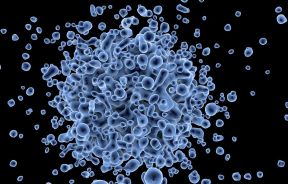Brain-Eating Bacteria that Killed Two Caused by Tap Water in Neti Pots; CDC Does Not Know How They Entered Homes

Researchers from the Centers for Disease Control and Prevention have identified the sources of the brain-eating bacteria that killed two people last year. The CDC has identified the humble Neti pot as the culprit behind the deaths.
Neti pots are popular for use for many people who find that the systems irrigate their sinuses and nasal cavities.
The CDC inquiry came about because of two cases last year. In 2011, two people, a 28-year-old man and a 51-year-old woman, in cases months and miles apart, both died from infections from Naegleria fowleri, more commonly referred to as "brain-eating bacteria." Infections occur when the amoeba travel up the nasal cavity and into a person's brain.
CDC officials say that tap water is safe to use and drink, and no incidences of brain-eating bacteria have occurred while people have simply showered or bathed. In fact, in most cases of the deadly amoeba infection, people have contracted the disease while swimming in freshwater lakes or rivers.
Between the years of 2002 and 2011, 32 cases have been reported; 28 of those were from people swimming in lakes and rivers, and two were infected by the bacteria from a contaminated geothermal source, like a hot spring. Of those reported cases, only one has survived.
The researchers concluded that the neti pots were to blame, because in neither case could family members say if the victims had been swimming in freshwater prior their deaths. The CDC examined water sources and treatment facilities in their houses and municipalities. Municipalities' water treatment facilities are normally very effective at killing disease-causing organisms. While CDC officials admit that the bacteria could have made it through the filtration system, they remained confused about where and how they would.
For the 28-year-old man who died in southern Louisiana, officials found the amoebas in a tankless water heater in his home. For the 51-year-old woman in the northern portion of the state, the amoebas were found in the bathroom sink and tub faucets. The CDC does not understand how they got there.
Neti pots also come with salt and instructions that state to let the salt dissolve before pouring the contents of the pot into a person's nasal cavities. The amoebas would typically stay alive in the salinated water for over four hours, way longer than the amount of time that most people would care to wait before using their neti pot. Officials advise users not to assume that the salt will kill bacteria.
While it is unlikely that amoebas are in your home, the CDC recommends the use of distilled, boiled, and filtered water, rather than from the tap, in neti pots.
The study by the CDC was published today in the journal Clinical Infectious Diseases.
Published by Medicaldaily.com



























